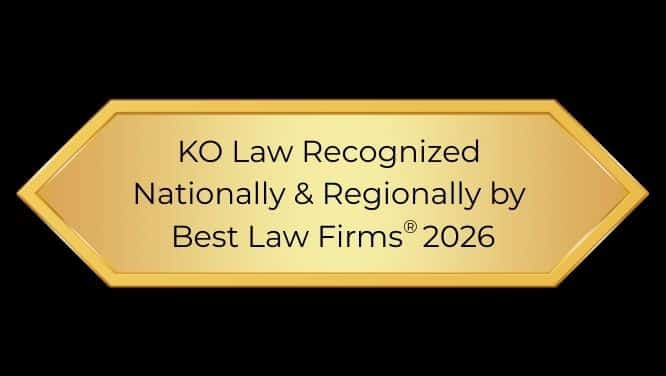M&A 101: Four Key Strategies to Lay the Groundwork for Success

- Matt Burns
- |
- September 24, 2019
Entrepreneurs and business owners spend years building their businesses and handle countless day-to-day challenges that come with running a business. Yet when the time comes for one of the biggest business milestones – an acquisition or an exit – they often feel unprepared and have little experience in how the process works.
Research shows that a lack of pre-transition planning significantly contributes to failed mergers and acquisitions. With a little advanced planning and preparation, however, many M&A pitfalls can be avoided.
Whether you plan to sell your business in the near future or years from now as part of your retirement plan, a little bit of preparation, planning and forming good habits can go a long wayto put you in a good position for a successful and efficient closing. There are a few key steps you can take today to prepare your business to be sold, make it more attractive to buyers, avoid costly red flags that could jeopardize the deal (and increase everyone’s legal expenses) and, in the meantime, help your company run smoothly day-to-day.
For starters, think back to the early days of founding your company and dig out those governing documents. Many of these documents fall by the wayside pretty quickly due to more pressing day-to-day demands, or because following the procedures in these documents might not feel necessary if, for example, they require you to record the decisions of the board but you are the only member. When the time comes to exit, a potential buyer will want to see that these basic fundamentals are in place and in good condition before closing the deal. If your business is a corporation, items one, two and four below apply to you. If your business is an LLC, you can skip ahead to items three and four.
1. Dust off the charter.
For many companies, a frequent and potentially very troublesome issue is stock that is improperly issued or poorly documented. Few things give a potential buyer more heartburn than not being certain who actually owns all of the stock of the company they want to buy. One of the places where the rules relating to the proper issuance of shares is located is the company’s charter. Depending on the state where you are incorporated, this may be called the charter, articles of incorporation or a certificate of incorporation, but we’ll just call it the charter. The charter addresses the highest-level actions of the company and the stockholders. It often covers things like the rights of the classes of shares, restrictions on the sale of shares, the number of shares authorized, how the holders of the shares are paid in the event of a liquidation, etc.
Any time the company issues, sells or redeems shares, and any time you or another shareholder transfer shares, you should first refer to the charter to make sure you are following all of the internal rules of the company (or even better, your attorney can check your charter and help you through this). It really is worth the time and money to consult your lawyer before you do, or promise to do, anything with shares (or options) of the company. In the M&A process, a buyer will also want to ensure that all equity grants are fully documented and properly issued in accordance with the charter. Rules relating to the issuance or transfer of shares also appear frequently in a company’s bylaws (more on them below) and in some cases, companies and stockholders have additional agreements like stockholders’ agreements or investors’ rights agreements, so if you have things like that, be sure to refer to them to make sure you are complying with the agreements and restrictions in them as well.
2. Know your bylaws.
Bylaws are essentially the rules for day-to-day corporate conduct and governance, although they also may contain rules relating to the issuance or transfer of shares. They describe the roles and duties of the company’s officers, lay out the requirements for regular and special meetings of the board and shareholders and often address the operation of the board of directors. Bylaws pertaining to meetings of the board and shareholders are often neglected by closely held companies with just one or a few board members and shareholders, especially if those people are family members.
While it may seem silly to hold a formal annual board meeting and record it in the company’s minute book if, for example, the other board member is your spouse, following the requirements of your governing documents is an essential part of good corporate governance. It is especially important to record meetings where the bylaws or charter require the consent of the board or shareholders to make specific decisions. Read through your bylaws to see if there are any corporate formalities you need to remember to follow. If you don’t have bylaws, a good corporate lawyer should have a standard set that they can modify to suit your company fairly easily and cheaply (you should not have to pay a lawyer to draft bylaws from scratch).
3. Follow the rules and procedures laid out in your Operating Agreement.
It is much easier to get multiple owners on the same page when there isn’t a sale of the business on the horizon. For that reason, if your company is an LLC, you should have an operating agreement (sometimes called an LLC Agreement) in place from the start. This may be quite simple if the LLC has only one owner (or “member” in LLC terminology) since in that case there’s no need to discuss the voting and economic relationships between multiple members. If the LLC has more than one member, then the operating agreement should lay out guidelines around voting, financial relationships among the members as well as operational things like the officers and board structure.
LLCs are not immune to the problem of equity issuances that are poorly-documented or even invalid (in the case of an LLC, the equity is typically denominated in units instead of shares) and, like a corporation’s charter and bylaws, the operating agreement of an LLC lays out the rules and procedures for issuing units to founders or investors. Be sure you (or, ideally, your attorney) reviews your operating agreement each time you think about selling, issuing, or even just promising to sell or issue units of your LLC to someone (including, initially, yourself).
Be familiar with your operating agreement and follow the rules and procedures laid out in it. If you don’t have one, work with a qualified business attorney to prepare an operating agreement well before you consider selling your company (and, ideally, as soon as you form it).
4. Have a clear understanding of your Board, Managers and Officers.
Whether a corporation or an LLC, a company is run by people who have various roles and titles – and quite often more than one. A potential buyer does not want to buy a company where there is ambiguity at the officer or board member/manager level, or a company that has someone out there who thinks they are still an officer, director or manager and denies resigning or being removed. Your governing documents will lay out how to appoint a board member (whether that is a board of directors for a corporation, or a board of managers for an LLC) and how to appoint an officer. They should also lay out how to remove a board member or officer as well.
A frequent mistake is adding board members when you already have the maximum amount allowed in your governing documents or, on the flip side, having fewer than the minimum when a board member resigns. Check your governing documents to see how many board members you should have and what you need to do to appoint them. Similarly, for officers, make sure that someone is appointed to the offices you must have (in some cases, there are certain officers that a company must, by law, have). Further, make sure that if an officer resigns or is terminated, such resignation or termination is properly documented.
While digging up your governing documents may seem like an unnecessary headache, it is critical to laying the groundwork for M&A success and due diligence when the time comes for an exit.
Check back on the KO site and newsletter for upcoming installations that cover topics like engaging with investment bankers, lawyers, accounting firms, walking through the sale process as well as important things to keep an eye on after closing the sale.
Matt Burns is a corporate attorney at Koenig, Oelsner, Taylor, Schoenfeld & Gaddis PC (KO Law Firm), an innovative corporate and commercial law firm with a team of experienced lawyers and a practical, efficient, business-focused approach. Founded in 2003 on the philosophy that a different approach delivers better value, our business-first legal and industry expertise helps established brands and emerging companies achieve meaningful business outcomes. KO is headquartered in Denver and Boulder, Colo., and serves the technology, life sciences, consumer products, professional services, financial services, manufacturing, energy and ancillary cannabis industries. Reach Matt at [email protected].




